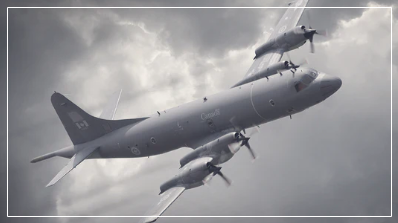Some Truths Take a Moment to Land
"The best crews I worked with didn’t pass the problem up the chain. They gathered around it. They asked questions. They took responsibility, not to cover themselves, but to complete the work."

On mission drift, leadership, and shared responsibility
July 2025
There are no blinking red lights in the middle of the ocean. That was the first clue.
It was night. A low patrol over the Atlantic. My partner was flying as an acoustician aboard the CP-140 Aurora, a long-range patrol aircraft used for submarine detection, search and rescue, and coastal surveillance. They were dropping sonobuoys into the sea, picking up underwater signals, and cross-referencing them with readings from the magnetic anomaly detector, a long boom trailing behind the fuselage like a stinger, tuned to detect metal beneath the waves.
Everything about the flight was routine. Rough skies, scattered turbulence, layered cloud cover. The kind of night where experience takes over and the checklists run themselves.
Then someone saw it. A red light, blinking on the near horizon. Not a dot on a screen, but visible. Real. Too close.
The crew went quiet for half a second. Not with confusion, but recognition. The light didn’t belong there. They weren’t flying over water anymore. Somewhere along the flight path, they had drifted.
They were flying over land.
Some truths take a moment to register, especially when they shouldn’t be true.
They were flying at 500 feet, a safe altitude over open water. Over land, that same altitude could kill you. The highest point in Nova Scotia, White Hill in Cape Breton, rises 1,755 feet above sea level.
And elevation doesn’t rise gently.
It can come all at once.
A misjudged ridge. An unseen bluff. A stand of trees you don’t see until it’s too late.
No one panicked. Not exactly. But the pilot’s voice came back sharper than before. The crew shifted into action the way good crews do: quietly, quickly, together.
The aircraft commander pulled the plane into a slow climb. Navigators cross-checked their position and communicated with operations. Sensor operators moved to observation seats to scan the terrain.
No one wasted time asking how they’d gotten there. There would be time for that later, time to analyze what failed and why. But not now.
Now the only thing that mattered was staying in the air and getting home.
They had lost situational awareness.
Not because they were careless.
Not because they weren’t good at their jobs.
They were focused. They were flying through turbulence.
They were running the mission the way they’d been trained to.
And in the process, they missed something.
It happens. Even on the best crews.
And when it does, you rely on the one truth you still have: you are all in the plane together.
I think about that flight more than I expected to.
Maybe because I know how easy it is to drift. To be so focused on your part, scanning the surface, watching the instruments, managing the data, that you miss the larger movement. You don’t notice when the wind shifts. You don’t see the drift until you notice the red light.
Now I lead a different kind of crew. Not in the air, but on the ground. The mission is different too. My team works across twenty-two industries. We write research, advise clients, and help solve the hardest problems in IT. I have the privilege of leading them. I’m accountable for the mission.
But I’m not the only one flying.
Each person on the team has their own area of responsibility, their own expertise, their own challenges. An analyst focused on healthcare systems brings different insights than one working in financial services. An advisor with analytics experience sees different opportunities than one focused on manufacturing. They are not passengers. They are crew.
And like any crew, we hit turbulence.
Sometimes problems land on my desk with a thud. The language is precise, professional, and quietly distancing.
“Stakeholders don’t think this works.”
“Account teams say we’ve missed the mark.”
“Leadership is asking why this wasn’t caught earlier.”
These aren’t accusations, not quite. But they’re not ownership either.
When I read those notes or hear the updates, I catch the unspoken message: here’s a problem. I thought you should know.
What I don’t always hear, but often look for, is something else. Something simpler.
“We have a problem. Let’s solve it.”
That small shift matters.
Because these aren’t my problems. They’re our problems. They belong to the team. They are signals from the mission.
The best crews I worked with didn’t pass the problem up the chain. They gathered around it. They asked questions. They took responsibility, not to cover themselves, but to complete the work.
Leadership, as I understand it, isn’t about absorbing everyone’s uncertainty. It’s about reminding the crew that the mission belongs to all of us.
Not out of kindness. Out of necessity.
The red light still appears sometimes. Not out over the Atlantic, but in meetings, emails, and Teams chats. In subtle phrasing. In half-claimed reports of trouble from the field.
It doesn’t mean we’re failing. It means we’re flying.
We’re working through turbulence. We’re learning how to stay oriented. We’re building the habit of coming together, not because someone said to, but because we all want to make it home.
The crew made it back that night. Not because one person saved the day, but because each one of them chose to return to the mission.
That’s what we do here too.
Or at least, that’s what we’re learning to do.
Together.
